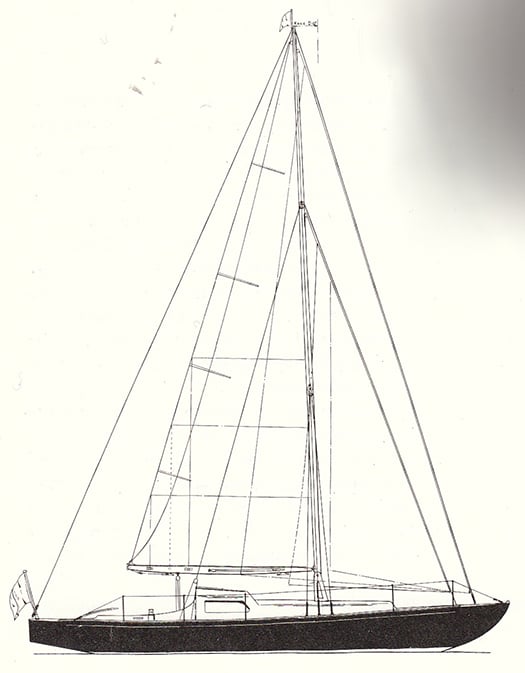Displaying items by tag: Whooper
Skerries Boat Beats 1800 Others To Win Round The Island Race
#rtir – It's not the first time that Italian marine technical ace Giovanni Belgrano (he was the nuts-and-bolts man on the Italian America's Cup challenges) has surprised the fleets of modern boats on his adopted home waters of the Solent with an ace performance with his exquisitely-restored 1939 Laurent Giles 39ft centreboard sloop Whooper.
Nevertheless his overall win in Saturday's Round the Island Race was a sweet victory to be savoured with joy. Even more so, writes W M Nixon, when you realise it was all done with a boat from Skerries, County Dublin....
Yes indeed, folks. Through the 1960s and the early 1970s, Whooper was based in Skerries under the ownership of the great Christy Fox and his son Joe.
And here's the Lloyds entry from the register of 1970 to prove it:

Lloyds Register of 1970, with Whooper at home in Skerries
They'd chosen this unusual boat because her centreboard configuration gave them the shallow draft needed to be able to berth her alongside Skerries pier, rather than having to keep her in that dreadful anchorage out in the open bay. Having been built by Woodnutt's, she was a quality job, full of character, and well able to give a reasonable account of her herself in local races when they were able to get enough of a crew together to make the best of her.
In time she was sold away. But then a couple of years ago the Classic Yacht Regattas in the Solent area started featuring a beautifully-restored Whooper scoring serious wins. It speaks volumes for her owner's joy in sailing that he's at the sharp end of technological development around advanced boats in the day job, yet in his spare time he goes sailing in a very interesting old boat on which he has clearly lavished much loving attention.

Whooper's hull profile showing how the centreplate was incorporated into the hull without undue intrusion on the accommodation. In that same accommodation, many a boisterous party was held alongside Skerries pier, and in other ports too.

Whooper's hull lines. She was conceived as a comfortable shoal draft cruise to provide reasonably good performance, but no-one could have imagined that 77 years after she was designed, she'd be overall winner of the Round the Island Race.

Whooper's rig was an early version of the Laurent Giles "slutter". which could be both fractional and masthead, though during her time in Skerries she was always sailed as a masthead sloop. She also had one of the earliest Laurent Giles' versions of the new-fangled doghouse to give added headroom and better light in the aft part of the saloon.
In all, there were something like 14 boat with Irish links in the 1800-strong fleet which raced round the island, and it seems that the best-placed was Ben Daly's Quarter Tonner Cobh Pirate in 202nd place. That is, of course, if we don't just reclaim Whooper as one of our own.....





























































